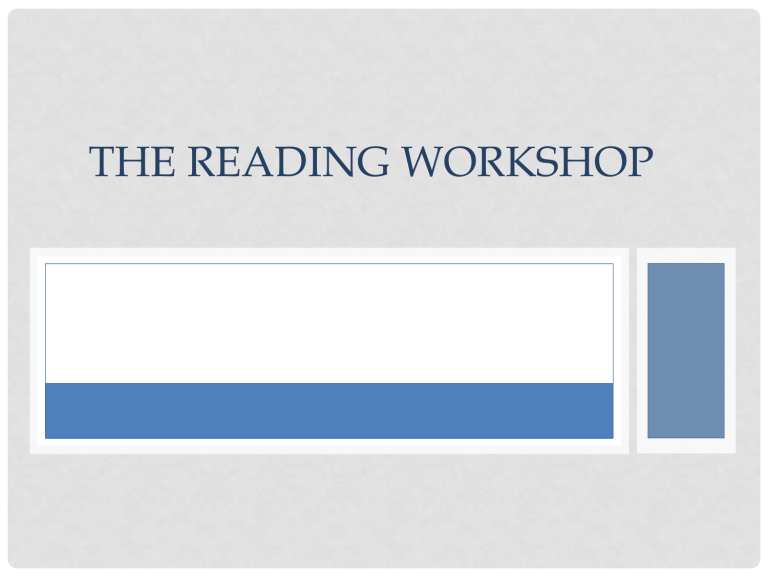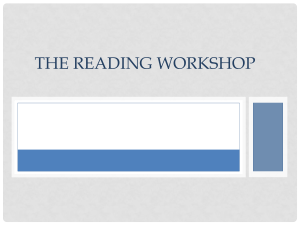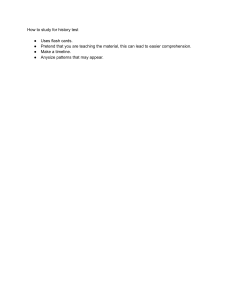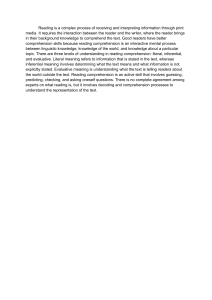
THE READING WORKSHOP READING GOALS To become EFFICIENT, ACTIVE and CRITICAL readers TRUE OR FALSE? “If I always read more slowly I will better understand difficult concepts and confusing texts.” FALSE: Sometimes reading slowly can impair your understanding. Slow readers are more likely to miss the point or get bogged down with minute detail. FACTORS THAT REDUCE READING RATE AND COMPREHENSION Limited perceptual span or excessive fixation Rereading Vocalization Distractions Lack of reading practice BENEFITS OF ACTIVE READING Active readers will: use powerful multisensory strategies increase reading comprehension read to remember ESSENTIAL STRATEGIES FOR TEXTBOOK READING Begin with a clear intention to understand what you read Be inquisitive Relate new information to prior knowledge Manage your textbook reading time effectively STEP I: SURVEYING THE TEXT Helps to see the big picture Activates prior knowledge Sets the stage to create new associations Enhances motivation and interest Boosts confidence Provides information about length and difficulty of the reading material • Helps set realistic goals to manage time effectively • • • • • • HOW TO SURVEY THE TEXT Read titles and subtitles Read the introduction or first paragraph Read headings Read the first sentence under the heading Watch for typographical and graphic aids Read the summary STEP II: FORMULATE QUESTIONS Formulating questions is an active reading strategy that promotes purposeful reading, activates curiosity, improves comprehension, and helps sustain attention. STEP III: ADJUST YOUR READING RATE It is important to adjust your rate of reading to the difficulty of the text and the purpose of your reading. Effective readers adjust their rate, while ineffective readers apply the same rate to everything they read. REASONS TO IMPROVE READING RATE In college, you have much reading and limited time. Reading too slowly reduces comprehension. Reading too slowly decreases interest in the text. WHEN TO INCREASE SPEED The material is simple The content is repetitive You are familiar the information You are not reading to remember facts and details You are searching for specific information WAYS TO INCREASE READING RATE AND COMPREHENSION Read in a quiet distraction free environment Set your purpose for reading and self-monitor Use a pen as a pacer to increase the number of words within a chunk HOW TO MONITOR COMPREHENSION Answer the guide questions that you developed prior to reading and check that you can answer them Try to predict possible test questions Take practice quizzes SOURCES "Active Reading: Comprehension and Rate." Reading Your Textbooks Effectively and Efficiently. N.p., n.d. Web. 11 July 2016. Hopper, Carolyn H. “5-10." Practicing College Learning Strategies. Boston: Houghton Mifflin, 2004. N. Print. Marks-Beale, Abby. "2." Success Skills: Strategies for Study and Lifelong Learning. Mason, OH: Thomson South-Western, 2007. McWhorter, Kathleen T. "2." College Reading and Study Skills. Boston: Little, Brown, 1980. Wong, Linda. Essential Study Skills. Boston: Houghton Mifflin, 2000. Print.





